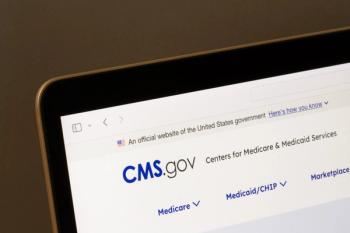
Prescription Drug Monitoring Programs Benefit Pharmacists
How PDMPs are helping both patients and pharmacists.
Many states now require providers to review Prescription Drug Monitoring Program (PDMP) databases when prescribing controlled substances to patients. So how is this affecting pharmacists?
During CBI’s
“What PDMPs do for our pharmacists is give them that additional insight to help make that decision in a difficult [medication] situation,” said George. The information ‘empowers’ pharmacists to do what’s best for patients, regardless of what the doctor says, in some cases.”
Overall, he said, PDMPs help pharmacists exercise professional judgment and ensure safe dispensing of controlled substance prescriptions and provide a resource for identifying trends when encountering a patient of concern.
Surge in pharmacist PDMP usage
PDMP usage by pharmacists has increased dramatically since 2011, when few providers and pharmacists were using PDMPs, said George. Reasons for lack of use included:
- Very challenging PDMP registration processes
- Low technical maturity of PDMPs
- Lack of awareness and proper training.
This began to change in 2012, when more discussion regarding PDMPs occurred at the state level, said George. “That’s really the year I think we saw lots of this evolution.” He noted more movement in PDMP standardization, more usage of unsolicited reports by PDMPs, enhanced access to PDMPs, and more interstate data sharing between PDMPs.
Overall, in 2013, the percentage of registered prescribers in PDMPs increased 28%, and the percentage of registered pharmacists increased 38%.
Today, Walgreens pharmacists use PDMPs almost daily, said George.
Up next: The questions every pharmacist should be asking
Walgreens encouages PDMP usage
In recent years, legal cases involving the Drug Enforcement Agency made it clear that, when a pharmacist feels that a prescription is questionable, simply calling a doctor’s office to verify that prescription does not always satisfy the verification requirements, said George.
As a result, Walgreens directed pharmacists to use their professional judgment, training, and experience to ensure that a prescription is valid and issued for a legitimate medical purpose. It also identified the use of PDMPs as one way pharmacists can help validate questionable prescriptions.
Walgreens also identified five questions pharmacists should ask to identify if a prescription is questionable:
The questions “helped give our pharmacists a guiding principle,” said George.
Results
Pharmacists were asking patients and providers more questions related to prescriptions, and some patients were experiencing processing delays. However, more pharmacists were registering for and using PDMPs, and pharmacists were more safely dispensing controlled substance prescriptions, said George. “We’re not here to second-guess the doctors, we’re really trying to do what’s best for the patient.”
Looking ahead
All pharmacies should have policies that support the use of a PDMP as part of the pharmacists’ corresponding responsibility, said George.
In addition to using PDMPs in situations that raise concerns, pharmacists should check the PDMP when encountering out-of-state prescriptions, early refills, and cash prescriptions. He added that these red flags are probably more visible to pharmacists than to prescribers.
“Each one of us, whether practitioner, or pharmacist, is a piece of the puzzle,” he said.
Newsletter
Pharmacy practice is always changing. Stay ahead of the curve with the Drug Topics newsletter and get the latest drug information, industry trends, and patient care tips.





















































































































































